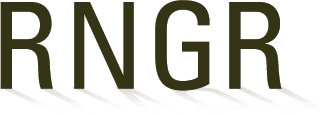Asteraceae (Crepis)
Crepis (nana)
Asteraceae
Sunflower family
Crepis
nana
Rich.
Dwarf hawksbeard
CRENAN
Alpine slope, southeastern B.C.
C. nana is a dwarf alpine to subalpine species that occupies talus and scree slopes throughout western North America and northern Asia. It inhabits talus and scree slopes above treeline.
plants
seed
Container (plug)
160 ml conetainers
9 Months
Height: 2 cm, 10 to 12 true leaves
Caliper: n/a
Root System: firm plug in conetainer
Seeds are hand collected in late August when achenes turn grey and are easily removed from the disc. Seeds are collected in paper envelopes and kept in a well ventilate drying shed prior to cleaning.
Seeds are hand cleaned.
Seed longevity is unknown.
Seed dormancy is classified as non dormant.
Seeds/Kg: 1,200,000 /kg approx.
% Purity: 100%
% Germination:55%
Fresh seeds were sown in the outdoor nursery and subjected to a 5 month winter stratification. Germination occurs in late May when daytime temperatures reach 22C or higher.
Outdoor nursery growing facility.
Sowing Method: Direct Sowing. Seeds are lightly covered with medium.
This species requires a well aerated medium and careful irrigation practices during germination and growth.
Growingmedum used is 70% milled sphagnum peat, perlite, and vermiculite and 30%perlite with Osmocote controlled release fertilizer (13N:13P2O5:13K2O; 8 to 9 month release rate at 21C) and Micromax fertilizer (12%S, 0.1%B, 0.5%Cu, 12%Fe, 2.5%Mn, 0.05%Mo, 1%Zn) at the rate of 1 gram of Osmocote and 0.20 gram of Micromax per 172 ml conetainer. Conetainers are filled and sown in late fall and irrigated thoroughly prior to winter stratification.
Medium is kept slightly moist during germination. Initial germination appeared uniform and occurred following 2 weeks of temperatures at 22C or above.
4 weeks
Root and shoot development occurs rapidly following germination. Plants were fertilized with 13-13-13 liquid NPK fertilizerat 100 ppm during the growing season. Careful attention should be made to irrigation as this species is susceptible to overwatering.
12 weeks
Irrigation is gradually reduced in September and October. Plants are leached with clear water and fertilized with 10-20-20 liquid NPK fertilizer at 200 ppm once before winterization.
4 weeks
Total Time to Harvest: 9 months
Harvest Date: August
Storage Conditions: Overwinter in outdoor nursery under insulating foam cover and snow.
5 months
There are 2 subspecies; subspecies nana, the widespread typical phase and subspecies ramosa, which occurs in the southern part of the range of this species.
Flora of the Pacific Northwest, Hitchcock and Cronquist, 7th edition, University of Washington Press, 1973.
Seeding Rate Statistics for Native and Introduced Species, Hassell, Wendel, U.S.D.I. and U.S.D.A., April 1996.
Seeds: Ecology, Biogeography, and Evolution of Dormancy and Germination, Baskin and Baskin, Academic Press, 1998.
Seed Germination Theory and Practice, Deno, Norman, Penn State University, 1993.
Glacier National Park Native Plant Nursery Propagation Records, unpublished.
Luna, Tara; Evans, Jeff; Wick, Dale. 2008. Propagation protocol for production of Container (plug) Crepis nana Rich. plants 160 ml conetainers; USDI NPS - Glacier National Park West Glacier, Montana. In: Native Plant Network. URL: https://NativePlantNetwork.org (accessed 2025/06/22). US Department of Agriculture, Forest Service, National Center for Reforestation, Nurseries, and Genetic Resources.





